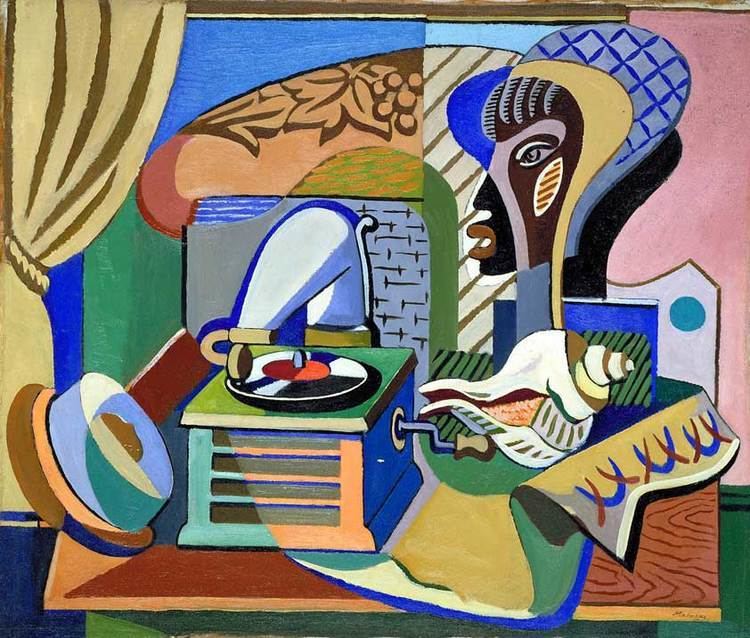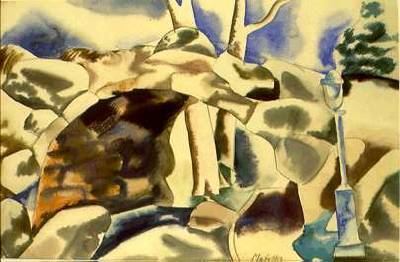Nationality United States Movement Modernism Known for Painting | Name Jan Matulka Artwork October Cloud Role Artist | |
 | ||
Awards Joseph Pulitzer National Traveling Scholarship Died June 25, 1972, New York City, New York, United States Education National Academy Museum and School Similar People | ||
Modernist inclinations the art of jan matulka
Jan Matulka (7 November 1890 – 25 June 1972) was a Czech-American modern artist originally from Bohemia. Matulka's style ranged from Abstract expressionism to landscapes, sometimes in the same day. He has directly influenced artists like Dorothy Dehner, Francis Criss, Burgoyne Diller, I. Rice Pereira, and David Smith.
Contents
- Modernist inclinations the art of jan matulka
- Jak Vm dupou krlci 1105 Jan Matulka Okresn mysliveck spol
- Early life
- Work
- Isolation and death
- Exhibitions
- References

Jak Vám dupou králíci 1105 Jan Matulka Okresní myslivecký spol
Early life

Matulka was born on 7 November 1890 in Vlachovo Březí, Bohemia, then part of Austria-Hungary and now part of Czech Republic. In 1907 Jan, his parents Maria and John, and his five younger sisters moved to The Bronx. Soon after John separated from Jan's mother and left the family alone and with little money.

In 1908 Jan Matulka began studying at the National Academy of Design in New York City. Upon graduation in 1917 Matulka met Ludmila "Lída" Jiroušková who would on 1 May 1918 become his wife. Lída Matulka worked for the New York Public Library as the head of the Czechoslovak literature section and helped connect her husband to the larger cultural community.

Between 1917 and 1918 Matulka traveled around the United States and the Caribbean as the first recipient of the Joseph Pulitzer National Traveling Scholarship, painting as he went. While in the Southwest he became one of the first modern artists to portray the Hopi snake rain dance.
Work
In 1919 Matulka illustrated Czechoslovak Fairy Tales with writer Parker Fillmore and published by Hippocrene Books. In 1920 the pair compiled a second book, The Shoemaker's Apron, published by Harcourt Brace & Company

The next few years Jan and Lida traveled to Czechoslovakia to visit the old family farm, as well as to Germany and France. Matulka found inspiration in the scenery of Tŭri Pôle village, a place that fueled many more paintings over the years. Jan established a studio in Paris and would over-winter there while Lida returned to New York City each October. In Paris he was acquaintances with Gertrude Stein, André Lhote, Jean Lurçat, Josef Šíma, Václav Vytlačil, and Albert Gleizes.
In the 1920s Matulka maintained both his studios, frequently traveling to and fro from Paris to New York City. Around the middle of the decade Matulka began painting stark and jazzy cityscapes. This by no means meant he limited himself to that style, as he was also painting landscapes in Cape Ann, as well as Abstract pieces.
Katherine Sophie Dreier became his patron briefly from 1925 to 1926, which came to a premature end mainly due to petty disagreements and Matulka's general lack of social grace, ranging from tardiness to tantrums. In November 1926 he started to contribute illustrations to The New Masses.
In 1927, Matulka began an association with the Frank K. M. Rehn Gallery. The clientele of the gallery wanted more conservative and representational works so Matulka complied because he needed the income. Again, this did not prevent him from painting in other styles for other outlets. In 1928 he began drawing from the model when he started meeting with the Society of Independent Artists, while contributing illustrations to the socialist Dělník Kalendar.
With help from Max Weber and Václav Vytlačil Matulka landed a teaching job at the Art Students League of New York, his first salaried position. Being the only modernist faculty member, his classes were quite popular. His students include Dorothy Dehner, Francis Criss, Burgoyne Diller, I. Rice Pereira, David Smith, Jacob Burck, and Esther Shemitz. The lattermost would later state that Matulka was the greatest influence on his work. Matulka was pushed out of his position at the Art Students League by conservative factions in 1931, but with encouragement from students he continued teaching a private class, which later disbanded in 1932. Matulka continued teaching one-on-one classes for a time after that.
Personal and global financial woes soon prevented Matulka from traveling annually to Paris. In 1928 he sublet his studio there to jazz painter Stuart Davis. Later Josef Šíma sublet it, taking it over completely from Matulka in 1934. Šíma stored all Matulka's paintings and other works left in the studio, eventually transporting them to his own house in Fontainebleau, where unfortunately these things did not survive World War II.
From 1934 until it ended in 1935 Matulka became one of the few abstract painters to join the Public Works of Art Project, giving him a taste for murals and public art. Immediately afterward he joined the Federal Art Project and also worked on the Williamsburg Houses, eventually completing two murals, both of which were eventually destroyed or painted over.
Isolation and death
In 1936 Matulka helped found the American Abstract Artists, but refused to join the group. His emotional state continued to decline, even more so when his sister Barbara killed herself on 5 July. By the time his association with the Federal Art Project ended in 1939 he had become even more socially and emotionally isolated. He continued painting more and more experimental works.
Over the next few decades Matulka received much acclaim from his exhibitions, but remained relatively withdrawn from society. As age caught up with him, he suffered from many health issues, including deafness. Matulka died 25 June 1972 in New York City.
